Azur’s 1/72 Martin 167 Maryland
By Chris Banyai-Riepl
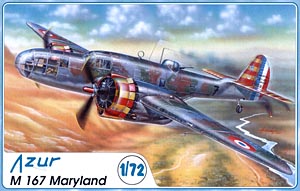 |

 |
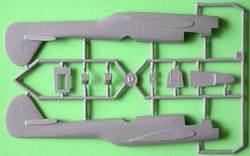 The remaing 75 aircraft were diverted to the UK for use by the RAF and these (as well as another 75 ordered by the RAF) became known as the Maryland Mk1. Better engines and a two-stage supercharger led to the Maryland Mk II and the British ordered 150 more.
The remaing 75 aircraft were diverted to the UK for use by the RAF and these (as well as another 75 ordered by the RAF) became known as the Maryland Mk1. Better engines and a two-stage supercharger led to the Maryland Mk II and the British ordered 150 more.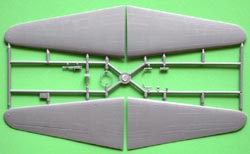 The Kit
The Kit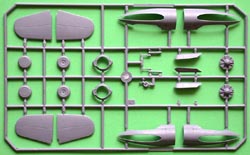 Starting with the interior, this kit comes with a mix of injection and resin parts, with the main floor, seats and control columns in plastic and the rest in resin. Sidewall detail is molded onto the fuselage halves. The nose is made up from three clear parts, while the rear turret comes with a rung, gun and seat under the clear turret. The Maryland had a pretty narrow fuselage, so not too much else is really needed here, as once the fuselage is together it’ll be pretty dark in there.
Starting with the interior, this kit comes with a mix of injection and resin parts, with the main floor, seats and control columns in plastic and the rest in resin. Sidewall detail is molded onto the fuselage halves. The nose is made up from three clear parts, while the rear turret comes with a rung, gun and seat under the clear turret. The Maryland had a pretty narrow fuselage, so not too much else is really needed here, as once the fuselage is together it’ll be pretty dark in there. Moving to the outside, the wings are split into upper and lower halves and are butt-joined to the fuselage. The stabilizers get the same treatment, and you might want to strengthen the joint on these somehow, especially with the wings. The engine nacelles are made up from right and left halves, with a separate front ring and separate engine front halves. The completed nacelles slip onto the wings, and once that’s done the landing gear is attached to the wings. Once that’s done the rest is downhill. Resin hubs get plastic propeller blades, and a few antennae round out the final details.
Moving to the outside, the wings are split into upper and lower halves and are butt-joined to the fuselage. The stabilizers get the same treatment, and you might want to strengthen the joint on these somehow, especially with the wings. The engine nacelles are made up from right and left halves, with a separate front ring and separate engine front halves. The completed nacelles slip onto the wings, and once that’s done the landing gear is attached to the wings. Once that’s done the rest is downhill. Resin hubs get plastic propeller blades, and a few antennae round out the final details.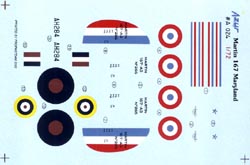 gray. Being a Vichy plane, it also has red and yellow stripes on the cowlings and tailplanes, making it a very colorful plane indeed. Decals include the roundels, rudder markings and diagonal wing stripes, as well as squadron markings for the tail. The second example is a North African RAF plane finished in Dark Earth and Middlestone over Azure Blue. There’s nothing else on the scheme other than roundels and serials, but the desert camouflage is always an attractive one, in my opinion.
gray. Being a Vichy plane, it also has red and yellow stripes on the cowlings and tailplanes, making it a very colorful plane indeed. Decals include the roundels, rudder markings and diagonal wing stripes, as well as squadron markings for the tail. The second example is a North African RAF plane finished in Dark Earth and Middlestone over Azure Blue. There’s nothing else on the scheme other than roundels and serials, but the desert camouflage is always an attractive one, in my opinion.